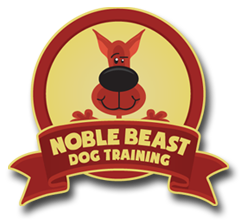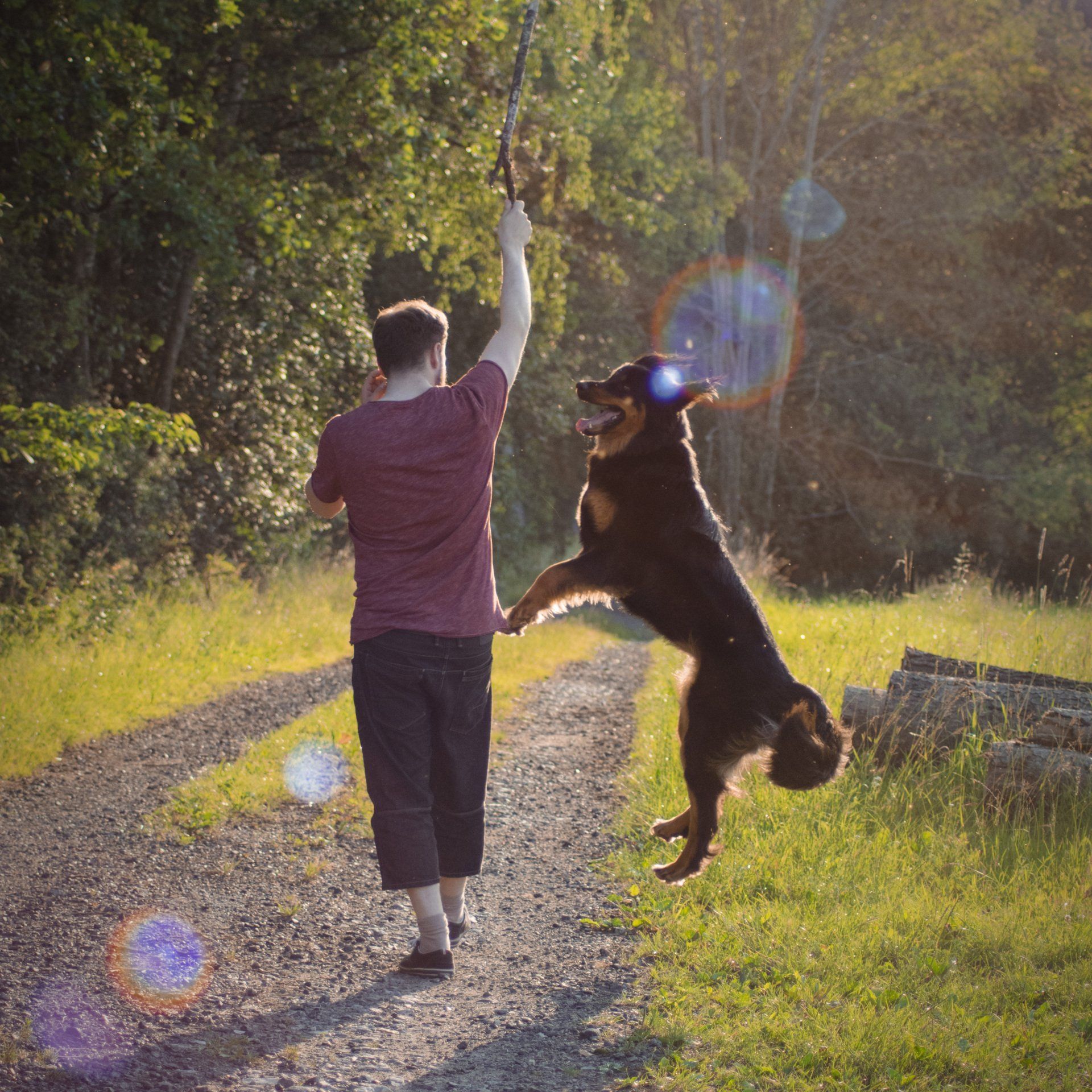WHATS THE BIG DEAL ABOUT USING A PRONG OR CHOKE COLLAR?
One of the main goals of the Noble Beast Dog Training Team is to introduce and educate folks on the science of dog training and dog behavior as we are very passionate about positive relationship focused training, and ALWAYS work in the best interest of the dog/human relationship.
Although dog training has come a long way from the traditional punishment based methods established decades ago, to this day, I still meet dog owners, vets, and even trainers who have the impression that there is no harm in using choke, prong, and electric collars “if used properly”. Well, I have met many dogs who would disagree and I can promise you, whether you use theses tools “properly” or not , the discomfort of these training tools is not a positive for any dog.
At Noble Beast Dog Training, we do not use or promote the use of these types of training tools and where we can’t make folks use alternative and more humane training tools when outside of class, it is our job as trainers to provide you with information about why we don’t use and promote these tools, why they can’t be used in our classes, and hopefully sway folks to choose alternative training tools going forth.
The reasons we don’t use or promote the use of choke, prong, or “E” collars:
1. The actual pain and possible damage (both physically and psychologically) these tools can cause is something we want no part of.
2. Most commonly, we see these tools being used to curb leash pulling and leash reactivity. Using these tools can suppress pulling behavior in many dogs WHILE they are wearing the collar, however it does not address WHY the dog is pulling to begin with and more often than not will increase behavior challenges such as anxiety and fear, that lead to aggression – scientific fact. In addition, many dogs are smart enough to know that when they are in a certain collar, not to pull, but when the collar is off – the dog goes back to pulling, leading the human to be dependent on the collar. All that has been accomplished at his point is control of the dog while wearing the collar. There has been no teaching the dog what it needs to know to be more focused on her owner and walk nicely on a leash.
3. Because dogs learn through association, a common cause of reactivity in dogs is due to the discomfort and/or pain of mild to harsh collar corrections and/or use of these types of tools. Whether intended or not, these corrections do not come across positively and feels negative to a dog – just as it would to a human, which in turn can cause a dog to develop a negative association with its owner, its environment, and/or (quite commonly) with other dogs.
Here are some real life examples of how we as dog owners can create a reactive dog:
Imagine a brand-new puppy that is happily out on a walk. He is joyfully walking – reveling in the smells, the sights, and company of his owner. All of the sudden the puppy sees another dog and without thinking excitedly pulls to see the other dog, but the owner pops the leash and says “NO!” or gives a quick swift and hard correction on the choke chain or prong collar. Now the puppy’s joyous walk has changed, out of no where pain and discomfort, and his owner’s demeanor changed from happy to very serious. From there, the owner and pup move on. The puppy living in the moment goes back to enjoying the walk and then sees a little girl running and skipping! Oh JOY, what fun – and the puppy excitedly pulls to join the little girl, but the owner pops the leash and says “NO!” or gives a quick swift and hard correction on the choke chain or prong collar. Soon the puppy realizes that most everything that brings him joy and excites him while on walks brings about a correction and now associates the corrections to going for walks with his owner. Not only has this pup developed a negative association for going on walks, but also now does not trust that his owner is not going to cause pain and discomfort.
A very committed dog owner has a puppy that has now hit adolescence and like most teenagers would rather play with his buddies than listen to mom at the dog park. Owner watched a YouTube video about using a shock collar to teach your dog to COME WHEN CALLED. After purchasing the shock collar, she puts it on her dog, making sure it is on the lowest setting, and they head to the dog park. Young pup does what he normally does upon entering and joins his friends, but owner asks her pup to COME and when he does not come she applies the shock. Although this shock did not fry the little guys neck, it was shocking to say the least. He stops in his tracks, pauses, not quit sure what is going on, then moves forward towards his friends again – mom quickly zaps him – which is uncomfortable at best. He looks back at his mom, she encourages him to come and WITH hesitation he moves toward her unsure of what is going to happen – but no shock! Wonderful, he happily runs towards mom she praises him, then he goes to play with his buddies again, and the scenario is repeated. This routine becomes the norm at the dog park as she utilizes the area to teach her dog to COME WHEN CALLED and her dog is now not only coming when called, but also staying very close to her. What she does not realize is the only reason he is doing this is because it is the only way to avoid getting shocked. In addition, because he was shocked multiple times while attempting to interact with other dogs, through association this young pup learns that other dogs = pain/discomfort. He now feels stressed around other dogs and because of this association learns to not trust the presence of other dogs and becomes reactive simply to keep them away, for in his mind – the shock happened only when dogs were around and thus because of dogs – not because he did not come when called.
Newly adopted dog has a history of being harassed and mistreated by humans. This dog is fearful of people, especially on leash because there is no escape route. New owner uses a choke collar to walk dog. When dog gets a certain distance from a person, he starts barking and lunging because people have proven to be scary, mean, and dangerous from past experiences and being defensive has worked at keeping people away. Owner corrects dog with choke collar, which causes pain. Dog associates the correction with humans because the only time he gets corrected is when he is barking at humans – which ultimately intensifies his dislike and distrust of humans – making his aggression towards people worse and inevitably more dangerous.
In all examples, I am sure you can imagine what the application of the correction does to the dog/human relationship, especially if the dog realized the punishment is coming from its human. With no initial teaching or training from the dogs owner about how to respond to other dogs or people, or how to be an active listener in active environments – the correction is bound to be confusing and scary, teaching the dog to not fully trust in the relationship.
The reasons we are unable to use those tools in our training classes:
These types of tools are not safe in group training situations and we do not want any dog to have a negative association with us, our environment, or another dog in class.
If your dog is wearing even a simple flat buckle collar and constantly pulls on her leash, causing you to have to pull back or make corrections, you will not only cause her pain and/or discomfort (at best), but also restrict the air to her brain. Granted, this is more prevalent with a choke collar, but it also occurs with a prong collar as it tightens and manipulates the dogs neck.
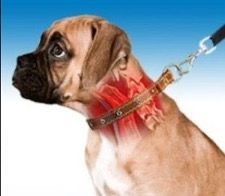
What naturally happens to her body is her heart rates increases, her breathing increases, and without thought she goes into a state of heightened arousal. The discomfort in her neck and lack of air to her brain more or less puts her on auto pilot, and she is now a reactive dog (not to be confused with aggressive) – not a calm thinking or responsive dog. This increased arousal creates frustration, then you have a dog that can and often will take her frustration out on another dog, another human being, or even the owner, either by heightened playfulness that lacks responsiveness to commands causing the owner or trainer to have to physically calm her – or by aggression risking dog fights and dog bites. In addition, this dog is in class with other dogs that feed off of her energy – some that are highly sensitive to other beings’ energies, so she can inadvertently affect another dog – which is extremely challenging for a trainer who has to manage multiple dog/owner teams, as well as for other owners who are doing their best to manage their dog and learn – AND let’s not forget the owner of said dog, who is distracted from learning with the task of trying to calm a dog who is now reactive and over aroused. This defeats our goal of having a positive controlled environment – which both people and dogs need as much as possible in training.
There are times in class when we have to physically grab dogs by their collars and move them. If during a collar grab, we cause pain, a dog can and will associate the pain with what is in front of them and often that is another dog. If another dog = pain then said dog can develop a negative association with the other dog or dogs. We cannot risk this in class.
If the use of these training tools caused any damage to your dog, it would be horrible and again, something we want no part in.
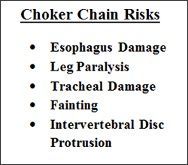
The following are articles related to the damage these types of collars can do:
- https://peterdobias.com/blogs/blog/a-serious-problem-in-dogs-that-is-often-ignored
- http://www.dogster.com/lifestyle/choke-prong-shock-collars-for-dogs-dog-health-tips-injuries
- https://www.dogstardaily.com/blogs/another-potentially-dangerous-dog-trainer
At Noble Beast Dog Training we honor your relationship with your dog and are not here to judge or condemn you for the tools you chooses to use on your dog, but if you are a proponent of these types of tools we are asking you to read the above articles and consider switching to a different tool, such as a Front Clip Harness or head halter.

What it comes down to is we have witness some pretty bad things associated with these types of training tools and know first-hand the damage these tools can do to a dog – both emotionally and physically, so it is in our nature to want to move people completely away from using tools that have the potential to cause damage your dog, to your relationship, or both.
Mindy Jarvis – Owner/Trainer
Noble Beast Dog Training


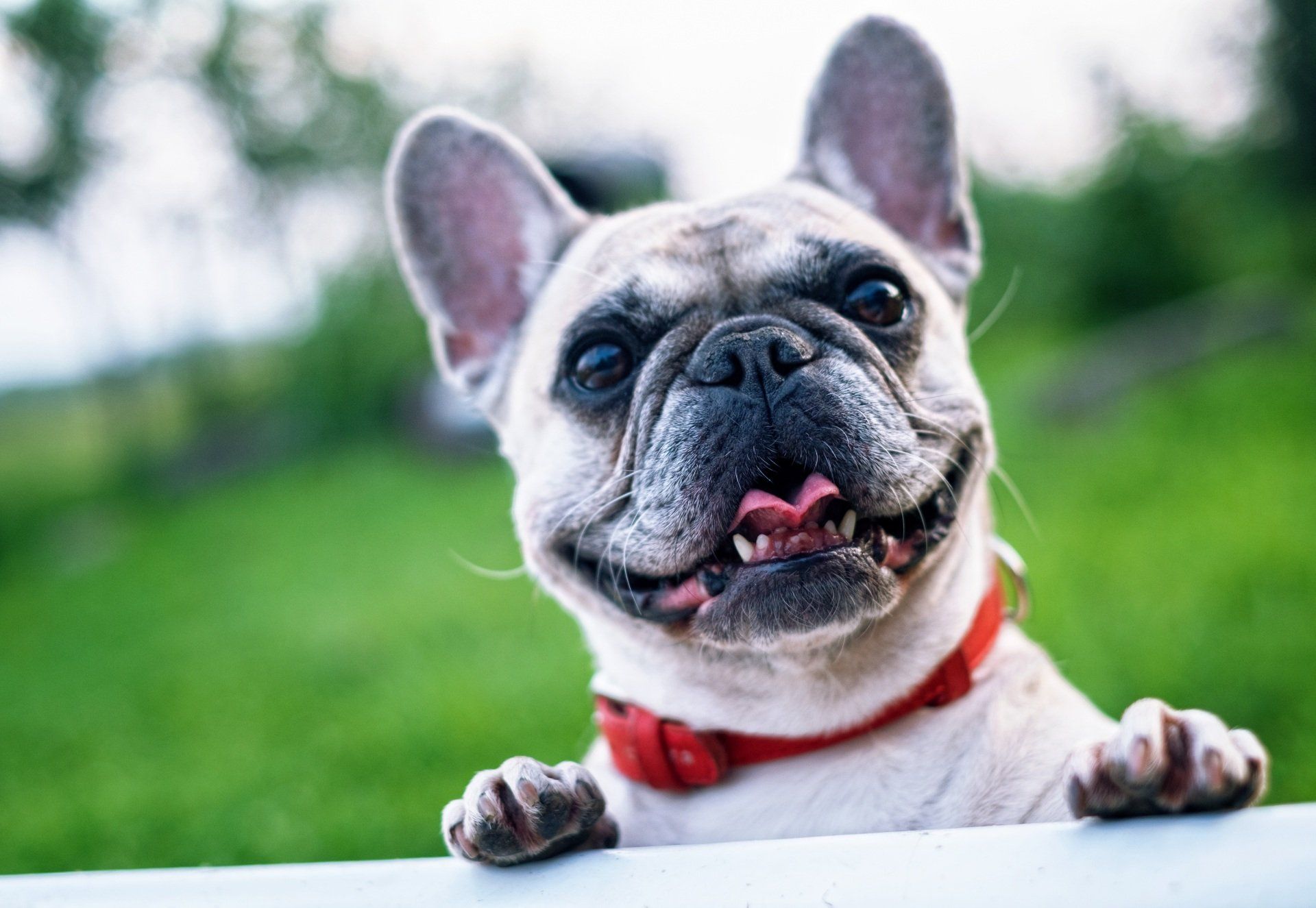
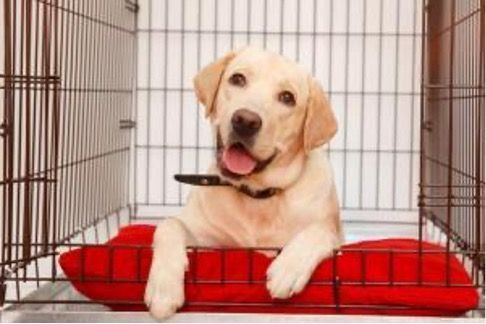
QUICK LINKS
PHYSICAL ADDRESS
Noble Beast Dog Training & Education Center
4335 Vine Street, Denver, CO 80216
Payment Address
5320 Xanadu Street, Denver, CO 80239
HOURS
Administrative Hours:
Monday – Thursday: 9am – 5pm
Friday: 9am - 12pm
Saturday & Sunday: Closed
Training hours vary by location and trainer
